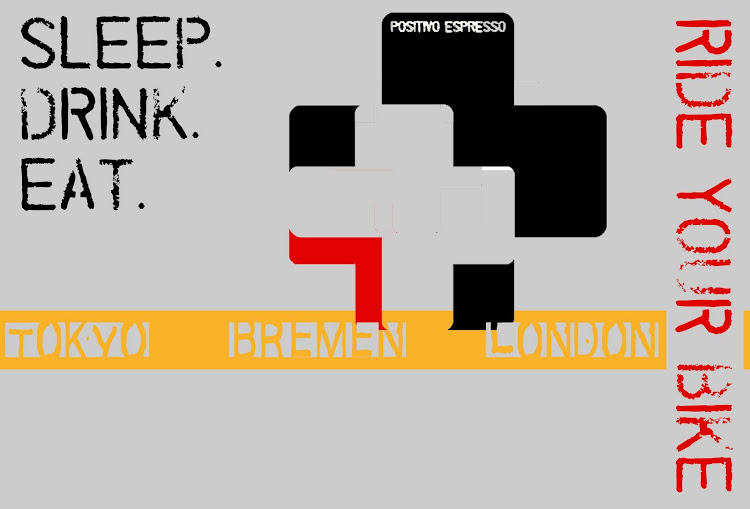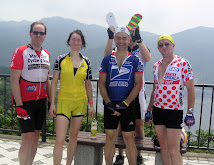 |
| The framebuilding room during our lunch break. Drafting tables up front, work stations, milling machines, lathes, pressurized argon and oxygen canisters, tungsten sharpening wheel and more. |
 |
| Work station #1 - my new home |
Then we practiced working with filler rod to add to the surface of the tubes, as we will need to do in order to actually weld tubes together. Seemed to work okay, though it took awhile to figure out how to work with different gauges of rod.
Then we tried the "pulsar" function of these Miller Maxstar 200 DX machines. This function works so that, for example, you can weld using a setting of maximum 150 amps on 1~2 cycles per second, with full output on for 30% of each cycle, and the remaining 70% of the cycle at only 10% of max output. There is plenty of flexibility on all these parameters by adjusting the settings on the machine, plus the foot pedal controls the power output like an accelerator on a car. Once you know what you are doing, this allows you to weld with much less "heat effect" damage to the metal tube. I was too tentative with the foot pedal and ended up not creating a real "puddle" of melted metal on the tube with the pulsar feature on, even after turning up the maximum amps from 100 to 150. For the most part, I was just melting little balls of filler rod along the surface of the metal. I finally got one or two beginner welds.
Then for the last hour of class we had our first chance to actually weld two small sections of tube together -- one section end mitered so that it would fit onto the other in the same way that a downtube attaches to a headtube. We had almost an hour to
--do the final prep on the mitered tube with our collection of various metal files and emery board so that the tubes would fit without a gap and remove any "burrs",
--clean the tubes with a bit of rubbing alcohol,
--set them in a small jig/holder,
--"tack" them in four places so they would stay together outside of the jig, and then
-- weld them.
I got through the first few steps, but had real trouble with the "tacking" -- again I was not getting the metal hot enough to create a real "pool" for the filler rod, with the electrode too far off the metal. I was too tentative because I was trying not to melt the mitered edge first, as it is thinner and also cannot dissipate heat as well as the other tube. Then I would touch my tungsten electrode to the tube (which usually attaches a "glob" of metal to the electrode, requires a quick switch, and then that tungsten will need to be shortened a bit and resharpened). So I turned off the "pulsar" function to get more steady heat and try to recreate my successes of earlier in the day ... and promptly melted a hole in the tube. It happens. Must have been an imperfection in the metal (... or, more likely, operator error). In any event, with some help from Bob K. I was able to get the pieces "tacked" well enough so I could take them out of the jig and start to practice welding them.
It was ugly, really ugly. Can I actually do this? I felt like I was starting to make a bit of progress ... just when the class came to an end.
Tomorrow we should get much more time to practice than we had today. I need it. I can't wait.












1 comment:
Sounds like a lot of fun!
Great if you can build something that allows you to go down Odarumi on the north side. Just be warned that the north side is pretty steep and the gravel is mostly very coarse. In fact, it is so bad that Tom and I walked a large part of it when we scaled it from the north side. I think it would be easier for me (with a healthy back) to go down because I feel quite confident just sliding down over gravel, but you may feel otherwise. So be warned!
Post a Comment